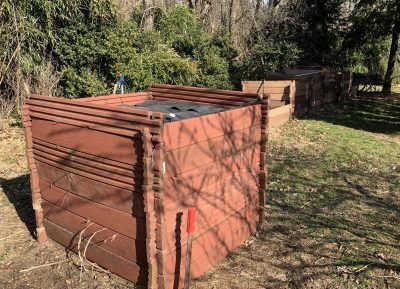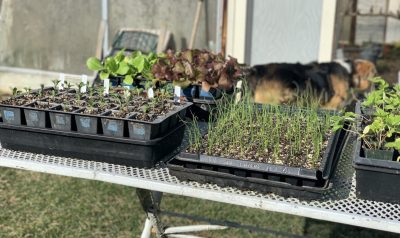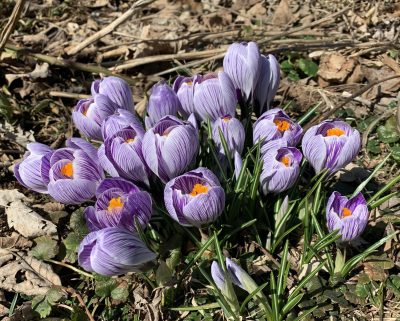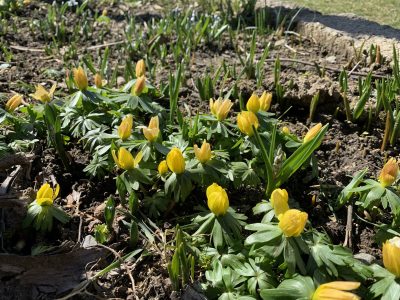COVID-19 OR NOT, THE GARDEN MARCHES ON
A Special Week
Coronavirus has come, and it will go, but the natural world soldiers on. My dogs, Sammy and Daisy, are as happy as ever, oblivious to the pandemic. My garden will respond likewise, trucking forward and offering a centering point as the world around has its ups and downs.
This week is a very special one in my gardening year; it’s the week I plant peas. April 1st, to be specific. It’s sort of the official beginning of the vegetable garden. “Sort of” because actually have been planting and harvesting lettuce, mâche, arugula, claytonia, kale, bok choy, chard, and celery all winter in the greenhouse.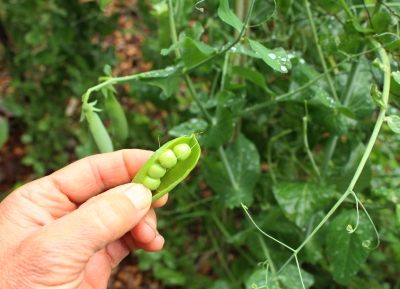
Not Too Early, Not Too Late
For some gardeners, St. Patrick’s Day is the date for sowing peas. Yes, that is the correct date for pea sowing — in Ireland, Virginia, and other places where I imagine soil temperatures reach about 40° F by that date. Above 40° F, and pea seeds become most likely to sprout rather than rot. On the other hand, waiting too long to plant pea seeds has the plant bearing during hot weather; peas don’t stand the heat well.
I mostly plant shelling peas, which are admittedly more trouble because they need shelling. To me, they’re worth it, for their flavor. (Then again, with the pandemic, more people are spending more time at home; gather ‘round and let’s shell peas.) I recommend the very tasty varieties Green Arrow and Lincoln.
My pea plants grow right up the center of 3-foot-wide beds. I make two furrows a couple of inches deep, one on either side of a bed’s center, and 4 inches apart. The seeds go in a couple of inches apart.
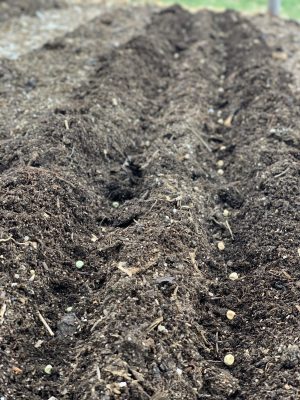
Pea plants are sometimes available as transplants, or, as my neighbor used to call them, “starts,” in cell-packs. Don’t buy them. Peas are a vegetable for which you sow the seeds directly in the garden. The reason is that the yield from a single plant, even six plants in a cell-pack is too minuscule to be worth it. And pea seeds sprout readily. Have some faith.
Once seedlings poke up through the ground surface, I put a trellis up the middle of the row. My trellis is temporary, able to move around the garden, just as do the pea plants, to a different bed each season. I pound a metal post into the ground at each end of the row, and then weave 3 foot high poultry netting (“chicken wire”), inch-and-a-half mesh, onto the posts. I use fiberglass electric fence posts, but any thin stakes woven at intervals into the netting and pushed into the ground keeps the fence from being floppy. After the final harvest, I pull up the pea plants, pull up the thin stakes, remove and roll up the netting, and pull up the end posts for use next year.
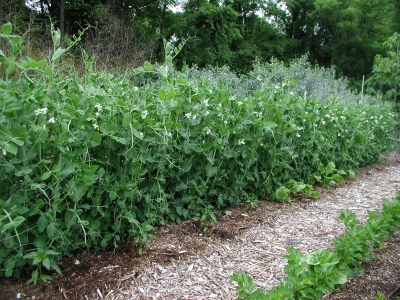
A number of other seeds can be planted on that seminal (for here) April 1st pea planting date. Those would include, except celery, the vegetables I mentioned above that have been growing in the greenhouse all winter. Radishes could also be included here, and spinach. And potatoes, as 2 ounce, whole tubers or pieces of cut tubers.
Best Tomatoes For . . . ?
Also significant about April 1st on my gardening calendar is that it’s my date to sow tomato seeds, indoors in seed flats. It’s not that tomato is my favorite garden vegetable; it’s just that it’s such a popular vegetable and perhaps the most versatile.
For a cherry tomato to just pop right in my mouth or put in salads, I grow Sungold. That’s all they’re good for, but they’re really, really good for that.

I dry many varieties, especially Amish Paste and Anna Russian. Some of them also go into jars, along with San Marzano, arguably the best tasting tomato for canning. (In Italy, cans of tomato made with San Marzano tout that on the label.) Blue Beech is another variety, this one with a unique flavor, that I both can and dry.
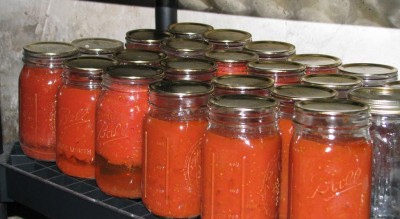
For good, fresh eating and very pretty tomatoes, I’m growing Nepal, Carmello, and, with a bright orange skin, Valencia. All three varieties are round tomatoes with smooth, crack-free skins.
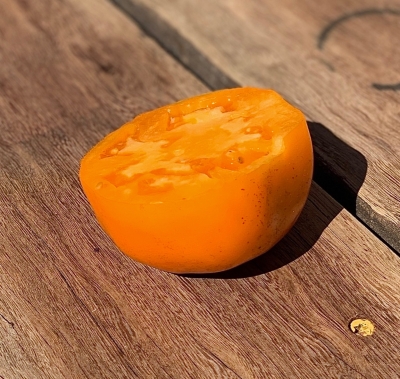
Valencia tomato
For the very best in fresh eating tomatoes, there are many to choose from. I’m growing Paul Robeson and Pink Brandywine this year, although many others, such as Belgian Giant, Cherokee Purple, or others with “Brandywine” in their name could also fill the bill. Extras of these and the previous mentioned “good, fresh eating” varieties go into sauce, but not, of course, the dedicated San Marzano batches. Besides being good for cooking and drying, Amish Paste and Anna Russian are also good fresh. Not San Marzano, though; it’s awful raw.
As with pea planting, my tomato-sowing date is not for everyone; what is for everyone is to sow the seeds about 6 weeks before the local “average date of the last killing frost,” a date that is available online or from the local County Cooperative Extension Office. Sowing on this date strikes a nice balance between plants being small enough to make a smooth transition out to the garden and being sufficiently large for a timely first harvest.
April 1st isn’t the date to start all transplants. I sowed onion seeds way back in early February, and pepper and eggplant seeds in early March. For an early crop of cucumbers or melons, I’ll sow those in early May for transplanting at the end of the month. Or I’ll plant the seeds directly in the ground sometime soon after the “last killing frost” date. (I made a whole chart of vegetables and garden sowing, indoor sowing, and transplanting dates, keyed to whatever anyone’s “last frost date” is, in my book Weedless Gardening.)
Take Care
The garden marches smoothly forward, snubbing its nose at the pandemic. We can do likewise if we stay home if possible, wash our hands frequently and thoroughly and keep them away from our faces, and protect ourselves and others if we must go out. Consider that everything you touch off-site could be contaminated, or could be made so by you.

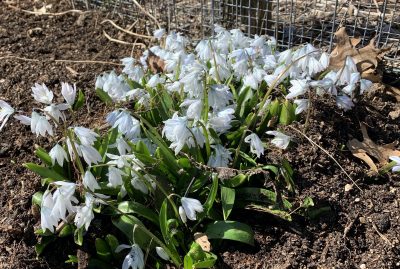 Busy, such as: attending to my compost. The last compost pile of late fall and winter is an accumulation of end-of-season debris from garden cleanup, bedding from the duck house, and kitchen scraps. Not much happens in it with the slow additions and winter cold. I decided to dig into the pile to see how it was doing. Not good!
Busy, such as: attending to my compost. The last compost pile of late fall and winter is an accumulation of end-of-season debris from garden cleanup, bedding from the duck house, and kitchen scraps. Not much happens in it with the slow additions and winter cold. I decided to dig into the pile to see how it was doing. Not good!